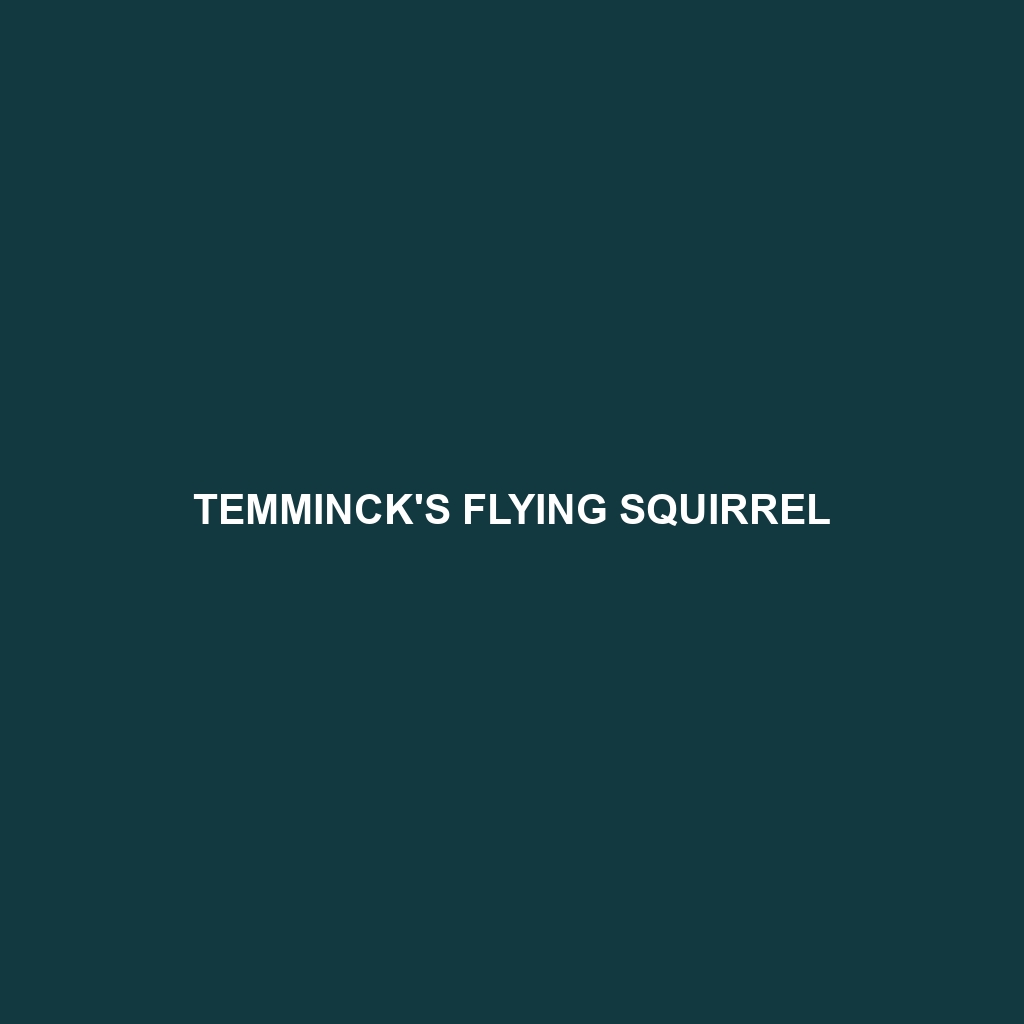Temminck’s Flying Squirrel: An Overview
Common Name: Temminck’s Flying Squirrel
Scientific Name: Petaurista philippensis
Habitat
Temminck’s Flying Squirrel primarily inhabits subtropical and tropical forests across Southeast Asia. This species is commonly found in countries such as India, Bangladesh, Myanmar, and parts of China. These flying squirrels prefer environments with dense tree cover that allows for gliding between trees, often favoring primary and secondary forests.
Physical Characteristics
Temminck’s Flying Squirrel is a medium-sized rodent, measuring approximately 30 to 50 cm in length, including its bushy tail. The fur is soft and can range from a grayish-brown to a reddish-brown hue, with a lighter underbelly. One of the distinct features of this species is its large, prominent eyes, which are adapted for nocturnal activity, and its flaps of skin, known as patagia, that extend from the forelimbs to the hind limbs, allowing it to glide efficiently.
Behavior
This rodent is primarily nocturnal, becoming active during the night to forage for food and socialize. Temminck’s Flying Squirrel is known for its remarkable ability to glide through the forest, using its patagia to cover distances of up to 150 meters. They are social animals and often live in groups, communicating through a variety of vocalizations and body language.
Diet
Temminck’s Flying Squirrel feeds primarily on a diet rich in fruits, nuts, and leaves. They are also known to consume insects and tree sap, showcasing a diverse diet that helps sustain their energy levels for gliding. Their foraging habits primarily occur at night, when they search for food in the canopy of their forest habitat.
Reproduction
The reproductive habits of Temminck’s Flying Squirrel involve seasonal breeding, typically occurring from March to August. Female squirrels give birth to 1 to 3 offspring after a gestation period of approximately 45 days. The young are weaned after about 8 weeks and begin to glide shortly thereafter, which is essential for their survival in the wild.
Conservation Status
Currently, Temminck’s Flying Squirrel is classified as Near Threatened by the International Union for Conservation of Nature (IUCN). Habitat destruction due to logging and agricultural expansion poses significant threats to their populations, emphasizing the need for conservation efforts to protect their natural habitats.
Interesting Facts
One fascinating aspect of Temminck’s Flying Squirrel is its ability to control its glide paths. They can maneuver mid-air to avoid obstacles, making them highly agile in forest environments. Additionally, these flying squirrels form strong familial bonds, often staying with their mothers for an extended period.
Role in Ecosystem
Temminck’s Flying Squirrel plays a vital role in its ecosystem, acting as a seed disperser that contributes to forest regeneration. By consuming various fruits and nuts, they assist in the growth of new plants, promoting biodiversity within their habitats. Their interactions with other species of plants and animals underline their importance in maintaining ecological balance.
